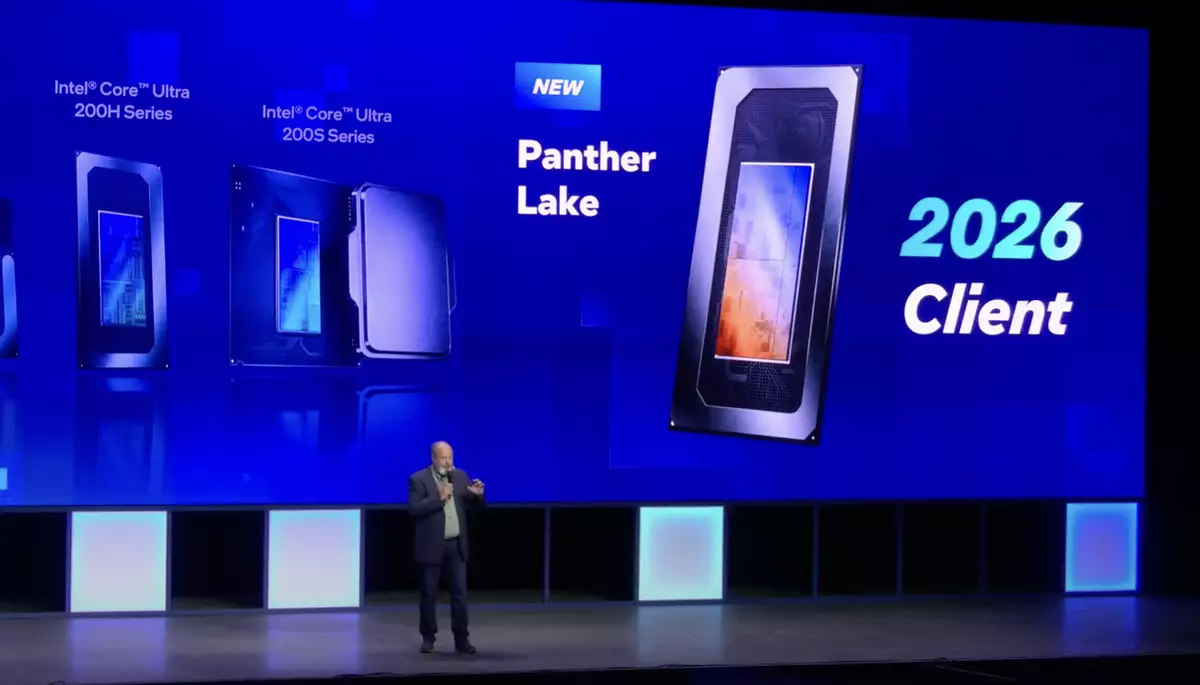The tech industry is no stranger to turbulence, and Intel’s recent events have epitomized this sentiment. With the new CEO, Lip-Bu Tan, taking the helm, there is a palpable sense of ambition within the walls of Intel. At the Intel Vision 2025 event, the focus was on progress, but attendees left with mixed emotions; there were no groundbreaking product unveilings, merely updates that reflect an ongoing struggle rather than the resounding triumphs many were hoping for. Intel confirmed that its next-generation Panther Lake CPU is slated for production later this year, with projected availability set for 2026—a far-off date for a company that has historically set the pace in the semiconductor landscape.
Understanding Panther Lake’s Place in Intel’s Lineup
To grasp the significance of Panther Lake, it’s essential to dissect its relationship with other Intel processors, namely Lunar Lake and Arrow Lake. The former represents a shift toward energy efficiency in mobile devices, featuring on-package memory and limited core configurations that cater to the ever-demanding laptop market. Arrow Lake, on the other hand, aims to push performance, catering to users who revel in higher core counts reminiscent of desktop power. Panther Lake, positioned somewhere between these two, aspires to blend efficiency with performance, a delicate balancing act that raises expectations significantly.
What’s worth noting, however, is that despite impressive designs, both Lunar and Arrow Lakes owe much of their manufacturing prowess to TSMC, reflecting Intel’s continued struggle to dominate its fabrication responsibilities. Panther Lake’s promise to combine the energy efficiency of Lunar with the performance metrics of Arrow could indeed place Intel back in the competitive fray—if subject to timely production and innovative breakthroughs.
The Frustrations of Delayed Production
One cannot overlook the implications of the production timeline shared at the event. While Jim Johnson, Intel’s head of client computing, emphasized readiness for 2026, the harsh reality is that this represents a delay of nearly a year from Intel’s previous promises regarding its 18A technology node. This is alarming, especially considering that the manufacturing phase often lags behind projected timelines for launches. What appears to be a straight road to achieving 18A technology may, in fact, be riddled with detours and speed bumps, akin to Intel’s experience with their notorious 10nm node.
Fears surrounding yield issues loom large over the ambitious 18A node. The attempts to not only boost transistor density but also implement advanced technologies, such as backside power, have added complexity to the already daunting task. Such complexity could lead Intel down a familiar path of extended delays and production woes, just as they faced with their 10nm technology that haunted them for years.
Competitiveness in a Rapidly Evolving Landscape
As Intel lingers in this transitional period, the spotlight remains on how effectively they can reclaim their standing in an increasingly competitive arena. Indeed, the threats posed by competitors, particularly TSMC, loom large over Intel’s ambitions. With TSMC’s current N3 nodes rapidly gaining traction and the imminent release of N2 technology on the horizon, Intel’s task becomes even more daunting. The looming challenge lies not merely in delivering Panther Lake, but making sure it stands up to the advancements that competitors are currently pouring into their products.
Innovation is the heart of tech, and whether Intel can ignite that spark within the timeframes they project remains an open question. Will Panther Lake provide a robust response to the market’s demand for high-performance computing while maintaining power efficiency? Or will it be more of a cautionary tale that echoes the company’s struggles from the past? Time alone will tell, but with the stakes higher than ever, Intel’s climb back to its formerly unassailable position in semiconductor technology is anything but guaranteed.
In an age where rapid iterations define success, delays suggest deeper issues—issues that Intel must confront head-on if it wishes to once again lead the charge in innovation rather than follow in the footsteps of faster-moving competitors.


Leave a Reply